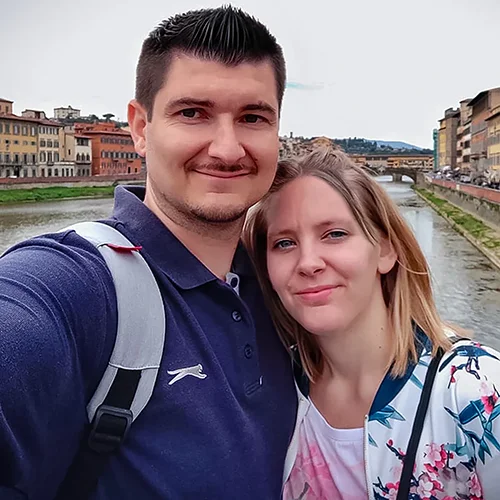Foreigners out! Or not?
Foreigners out! Or not?
Foreigners out! Or not?
Foreigners out! Or not?
26. September 2023
Feedback: 0
After a lengthy property sale in Germany, we’ve finally arrived in Croatia – more specifically, in Istria. For now, we’re living as nomads, but like many others here, we’re keeping an eye on the Croatian real estate market. We’ve already shared our experiences in the article Quickly Buying a House and even received feedback from a reader who had a similar experience two years ago.
The reality? If you’re a foreigner without a million-euro budget, your inquiries will often go unanswered. This contrasts with the generally hospitable and friendly attitude of Croatians. So, what’s going wrong?
Croatia’s Tourism: A Blessing and a Curse
A conversation with a local woman helped shed light on the situation. Tourism in Croatia is a key economic driver, but it comes with significant downsides.
Challenges of Mass Tourism:
◉ Overcrowded beaches and attractions during the high season.
◉ Litter issues, even on formerly pristine shores.
◉ Water shortages, which were particularly severe last year.
◉ Skyrocketing property prices, making it impossible for locals to buy homes in their own regions.
In Istria, the average price per square meter is now 3,150 euros. For a typical Croatian family earning a net annual income of around 13,000 euros, purchasing a 300,000-euro property is simply out of reach. Even derelict ruins with no roof, windows, or interior are selling for nearly 100,000 euros. Sadly, this is no longer the exception.
The Struggle to Rent in Croatia
If buying isn’t an option, renting a home is the next logical step – but this too has become a challenge:
◉ A furnished 55 m² apartment in Pula currently costs about 800 euros per month, excluding utilities.
◉ From October to March, many apartments sit vacant as the tourist season ends. But come April, tenants are forced to vacate as landlords prepare for new holiday renters.
Some locals cope by moving back into their parents’ homes during the season. But is this really a sustainable solution?
The Euro’s Impact on Living Costs
The introduction of the euro has also had an impact. As in Germany, officials claimed that prices wouldn’t increase, but the reality tells a different story:
◉ A loaf of bread, which used to cost around one euro, now sells for two to three euros.
◉ Businesses appear to have used inflation as a cover to hike prices for higher profits.
Kroatian Minister of Economy Davor Filipović announced price caps on over 1,000 items, effective until the end of 2023. However, critics argue that the discounts are superficial: prices were inflated first, only to be “lowered” later.
It’s no wonder many young Croatians are leaving the country to seek better opportunities abroad. In their absence, labor shortages are being filled by workers from Nepal and the Philippines, who now clean hotel rooms and tend gardens.
The Illusion of Bargain Properties
And yet, the dream of a bargain property in Croatia persists. We recently met a German family looking for a move-in-ready home with a large plot of land for just 60,000 euros.
Predictably, their negotiations fell apart when the seller set the record straight. While we could’ve warned them beforehand, we believe anyone seriously considering buying property abroad should do their own research first.
This lack of preparation and unrealistic expectations likely explains why some Croatian real estate agents are wary or even distant towards foreign buyers. Many see tourists and investors as contributors to the housing crisis, especially those with limited budgets who still compete for local properties.
Conclusion: Croatia’s Real Estate Market
Whether renting or buying, the Croatian real estate market presents significant challenges. Those considering a move here should be prepared for high prices and tough conditions.
What’s your opinion? Would you still consider buying a property in Croatia, or would you think twice?
UPDATE from October 21, 2023:
Here’s a little update from the real estate front. Searching for properties on-site is proving somewhat easier than from Germany. We’ve now acquired a Croatian phone number and are discreetly reaching out to realtors.
Currently, four agents are looking for a suitable property for us—more or less. During conversations with one realtor, we learned that there are indeed agents who hold back certain properties—usually the cheaper ones—and sell them exclusively to locals. After four unsuccessful viewings, we were offered a house that, according to the realtor’s website, had already been sold. When we inquired, the agent confided that this property could only be offered to a specific clientele at the seller’s request. Since this cannot be represented differently on the website, the houses are marked as „sold.“ We’ve often stumbled upon such websites and wondered why properties remain listed when they’re sold. How about removing them? Or do they serve as trophies?
The official explanation: Foreign investors are accustomed to different standards and have no interest in these old Istrian properties.

Wir sind zwei deutsche Auswanderer und auf emigres-life nehmen wir Dich mit auf unsere Reise in ein neues Leben.
In unserem Projekt schwingt das Pendel meist in Richtung stressig oder chaotisch und weniger in Richtung tiefenentspannt.
Wenn du also wissen willst, in welches Fettnäpfchen wir als nächstes treten oder welche Hürden vor uns liegen und wie wir sie überwinden, dann bleib dran.


 Pin it!
Pin it!

